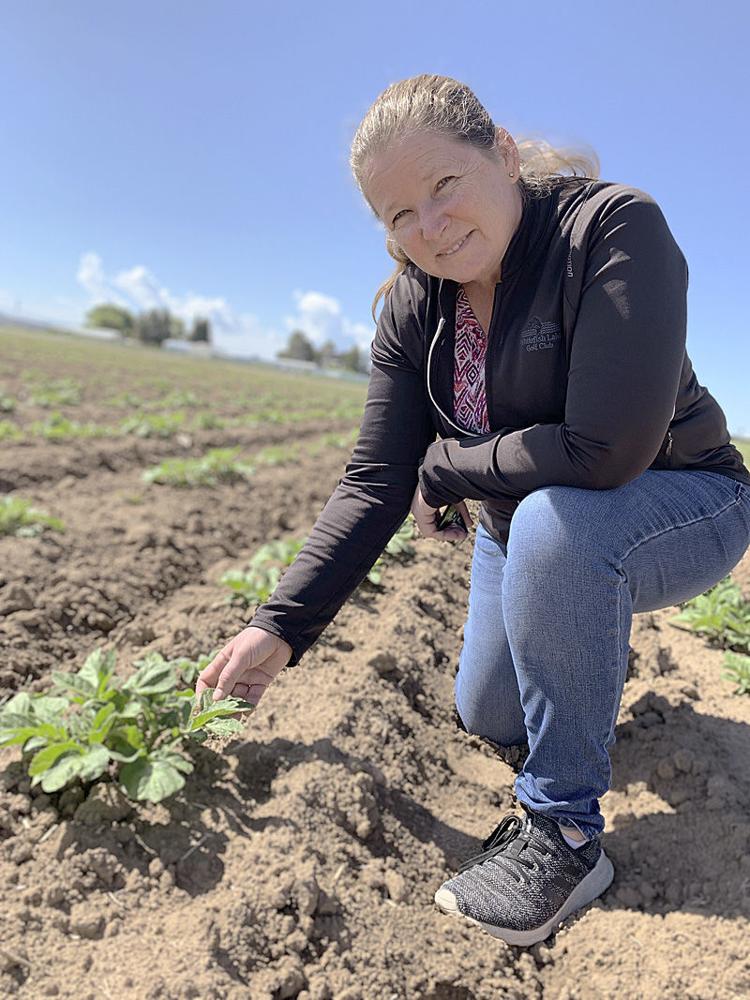Researcher Nora Olsen helps make sure Idaho's potatoes stay in the best possible shape as they move from field to storage cellar to customer.
Lately, the Kimberly-based University of Idaho potato specialist is also studying how conditions such as potato virus Y, and the tobacco rattle and potato mop-top viruses, impact productivity and quality.
 But maintaining the overall quality of Idaho potatoes is a priority area of study for Olsen.
But maintaining the overall quality of Idaho potatoes is a priority area of study for Olsen.
Recent findings include that slight changes to growing and harvesting procedures, and to conditions inside the storage cellar, can help keep potatoes looking and yielding their best — even in varieties most susceptible to virus or impact damage.
On the quality front, varieties differ in susceptibility to impact-caused Shatter Bruise and handling-induced Black Spot, “and the response of those varieties will differ based on the temperature of the potato,” Olsen said. “That allows us to focus in on recommendations we might make for minimizing bruising for a particular variety.”
Researchers are getting more variety-specific and less universal in their recommendations, she said. Northwest farmers grow many varieties.
“We want to identify areas where growers can make the greatest impact in minimizing quality issues, with certain management options growers might use,” Olsen said.
Pulp temperature, or how warm or cool the potato is at harvest, is an example.
“There are different thresholds for maximum pulp temperatures at harvest for specific varieties,” Olsen said. “We are trying to address the threshold of temperature range for specific varieties to minimize quality degradation due to bruise or disease.”
Growers can best safeguard quality by harvesting when temperatures and potatoes’ physiological stages are closest to ideal. This varies based on varieties and conditions.
“We may say harvest at 45 to 65 degrees, but that maybe a variety should not be harvested above 60—and if it is, what are the quality concerns and what can you do to mitigate?” Olsen said.
Quality is best ensured by proper practices in the field—for example, monitoring soil moisture and optimizing it where possible.
After the potatoes move into storage, adjusting conditions and minimizing conveyor-to-pile drop heights can also help maintain quality.
Olsen and other researchers from major potato-producing states are studying viruses, including how they impact particular varieties and whether some potatoes are at increased risk of quality degradation with time in storage. New strains of the plant pathogen potato virus Y are on the rise.
“Some of these viruses are becoming more prevalent,” she said. “Therefore, we want to better understand that if the industry or a grower has these viruses, what are some opportunities to manage it and ensure quality is maintained for consumers?”
For example, growers who have mop-top virus in potatoes could limit the amount of time in storage before processing or shipping to minimize risk for symptoms to develop in storage, Olsen said.
Work on viruses is national in scope and funded by a USDA specialty crop research initiative grant to 20-plus recipients.
Quality-focused research that is Idaho-centered is funded by the state potato commission.
At UI, “we have extensive extension and education resources to help in managing quality,” Olsen said.